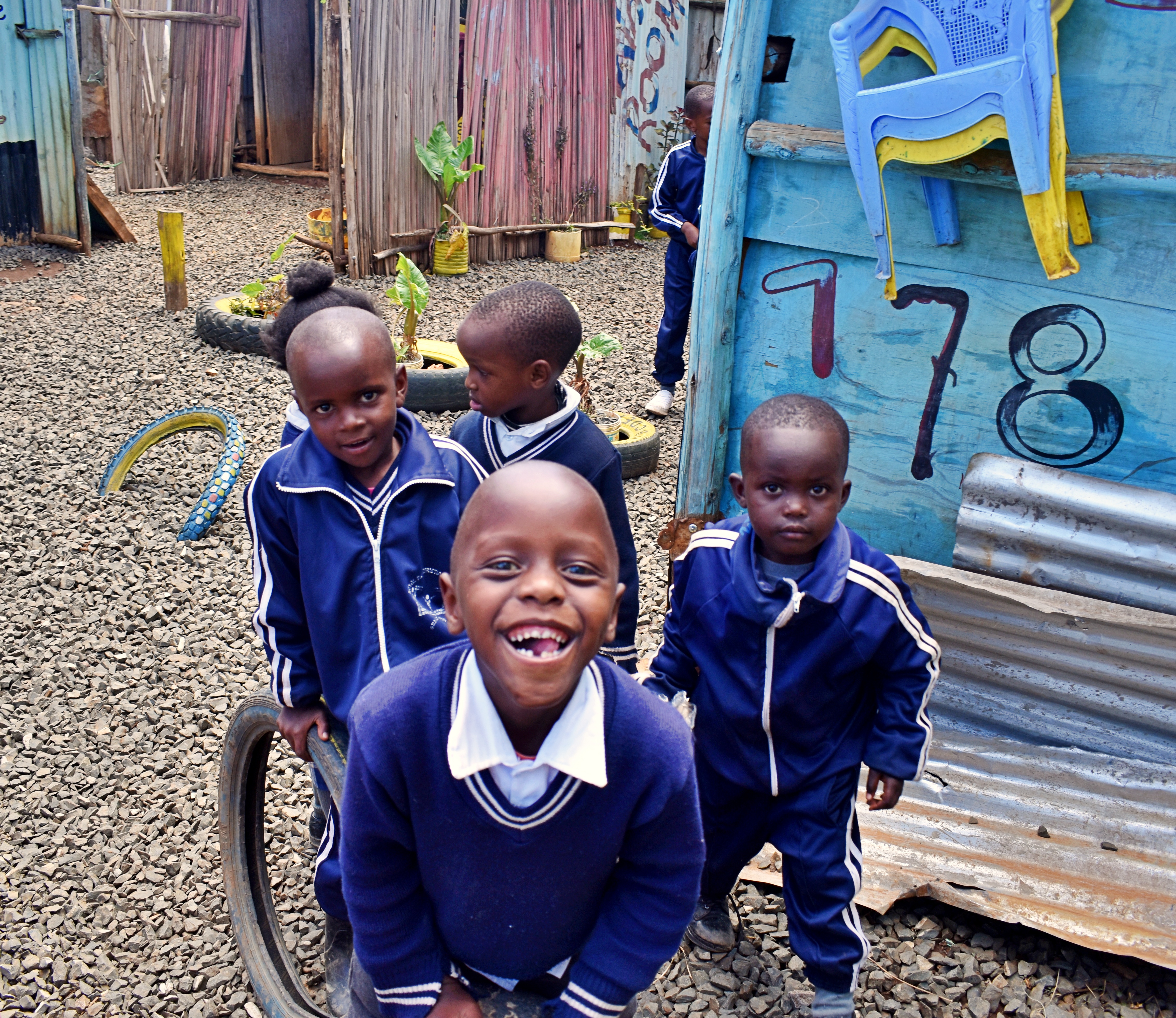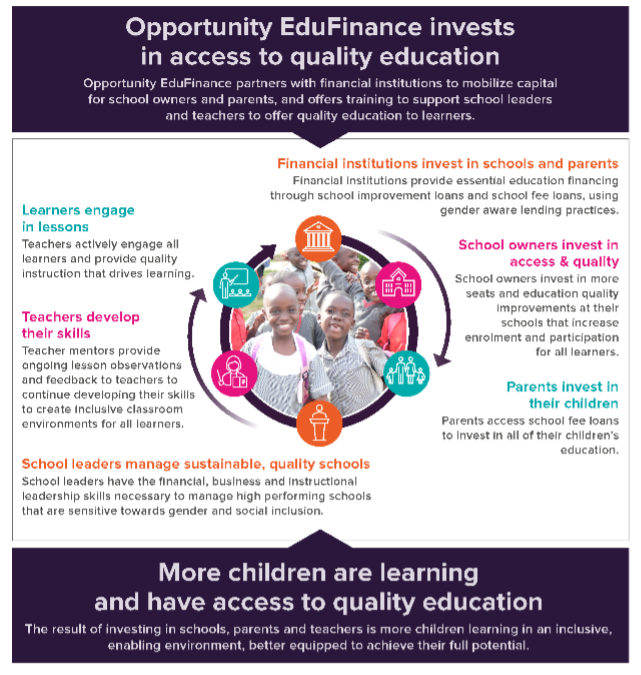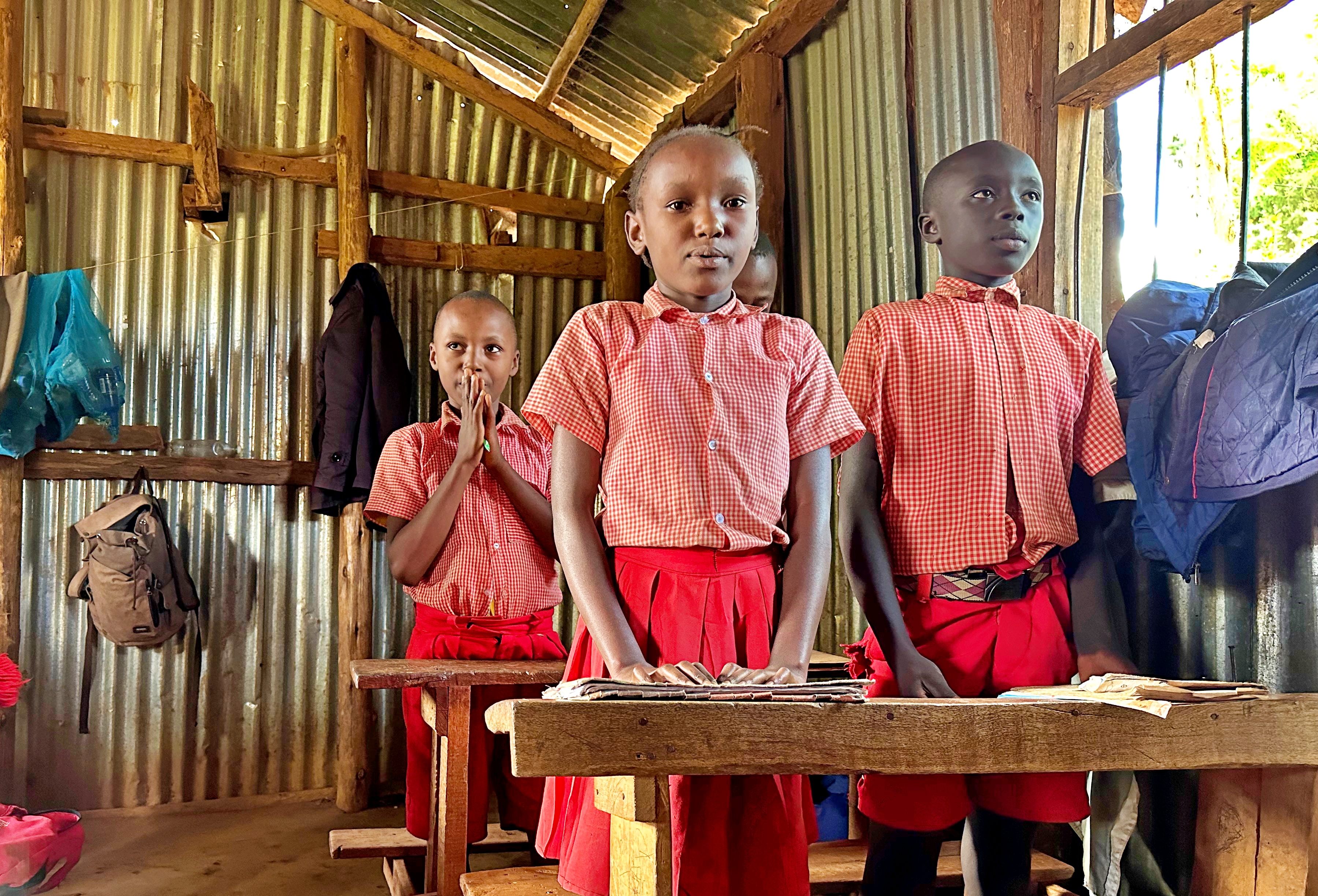3-Year study on Opportunity EduFinance model finds improved learning for children, especially girls and lower socioeconomic students

In 2020, Opportunity EduFinance designed a three-year quasi-experimental study in Kenya in partnership with ZiziAfrique and the Radical Innovation for Social Change (RISC) at the University of Chicago. The study focused on assessing the impact of the Opportunity EduFinance model on learning outcomes, disaggregating for children from lower socioeconomic backgrounds and gender.
After three years of child learning measurements, the study finds children gain as much as half a year equivalent of additional schooling linked to school leader and teacher professional development and school improvement loans invested in their schools.
What did the study find?
To assess learning improvements throughout Opportunity International EduFinance’s three-year program with affordable non-state schools, EduFinance collected a baseline dataset using the Uwezo learning assessment in early 2021 from a sample of 131 schools that had recently joined the Education Quality program. The exercise included students from a further 70 control schools.
The key findings not only highlighted overall learning gains by students from schools in the EduQuality program and/or borrowing a school improvement loan, but also larger learning gains by students from lower socioeconomic backgrounds and girls. This may indicate investments in professional development and loan accesses for affordable non-state schools could have a disproportionately greater impact on more marginalized learners.
- In English Literacy, the study finds that students coming from lower socioeconomic backgrounds stand to gain the most from the Education Quality intervention – gaining the equivalent of 0.53 years of school more than their peers throughout the study period.
- This outcome is followed closely by girls, who gain 0.47 years of English literacy schooling and all students gain 0.26 years from the Education Quality intervention.
- Students attending schools that received a loan gained 0.24 years in Mathematics, with girls benefiting marginally more, gaining 0.26 years.

What were the Key Research questions?
Opportunity International EduFinance works through partnerships with financial institutions to provide school improvement loans and education quality services to affordable non-state schools in low- and middle-income countries. As schools undertake efforts to improve their quality through school leadership and teacher mentor professional development training and make investments in their schools, EduFinance wants to better understand:
- How effective is the EduQuality program in increasing learning outcomes for students?
- How effective are school investments in increasing learning outcomes for students?
- Do any assessments of impact derived by the EduQuality program or school investments extend to girls and/ or students coming from lower socioeconomic backgrounds?
How did we determine 'low socioeconomic group' students?
EduFinance, RISC and ZiziAfrique collaborated to create an index for socioeconomic groups in 2020 during the study design process. Questions had to be asked of 8-year-old students that would enable the study to differentiate by economic status. The results were then stratified to enable analysis of each group.
These questions included:
- How many people are in your house?
- How many rooms are in your house?
- What are the walls made up of?
- Which household items (of a list) are in your house?
Why assess learning outcomes?

Opportunity EduFinance’s theory of change’s desired long-term impact is that more children are learning and have access to quality education.
EduFinance believes that the quality of education outcomes can be increased through:
- Provision of affordable financing for schools and parents
- Teacher mentorship and professional development
- School leadership training and planning
Answering these questions enable EduFinance to identify its effectiveness and incentivize schools to direct efforts and resources towards improvement of child learning outcomes.
Investments in leadership training have generally shown benefits to learning outcomes (World Bank, 2018), due to its impact on nearly every aspect of a schooling system including, but not limited to, school culture, school management, and teaching and learning. Studies also show that schools with better management capabilities have better test scores, with these results being found regardless of region and type of education system (Bloom, 2015).
Better management of schools, where school principals and headteachers are actively involved in school development planning, assisting teachers with lesson planning and goal setting, can prioritize learning among their students above all else. This results in better utilization of resources and has been demonstrated to drive improvements in learning outcomes (Education for All Global Monitoring Report, 2015).

Are there opportunities for further study?
The 2021-23 quasi-experimental study has been able to identify that schools in Kenya that are taking out School Improvement Loans, as well as schools in the Education Quality program are demonstrating greater learning outcomes than those who are not.
This builds on previous findings from Uganda conducted with RISC, as well as findings that School Improvement Loans have resulted in higher quality facilities at schools. However, it is still early to assess whether there was a statistically significant increase over time through a cohort study. This is because the study was conducted at a single point in time. A future, controlled study should include a Randomised Control Trial (RCT).
The future RCT would be conducted by identifying schools to participate in the sample before they take out their first School Improvement Loan and recording their baseline statistics at that time. Comparing the baseline result to the resulting value of the dependant test variables at the end of the term of the loan (2-3 years later, on average) would result in a more conclusive assessment.
Such a study would also benefit from a more granular child level approach; however, funding constraints are typically a major barrier to this, especially in the case of NGOs conducting the study. Measuring children’s reading and writing skills, using an early learning outcomes measure (ELOM) indicator such as the well-established Early Grade Reading Assessment (EGRA) and Early Grade Mathematics Assessment (EGMA) or Pratham’s Annual Status of Education Report (ASER) would offer clear indications of children’s learning outcomes and evidence of whether schools are improving in terms of quality.
Read the full study here!